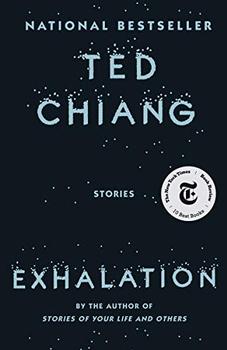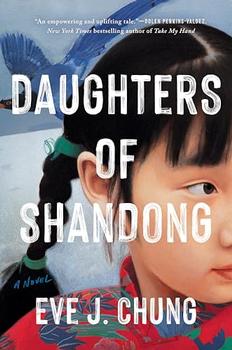Summary | Excerpt | Reviews | Beyond the Book | Read-Alikes | Genres & Themes | Author Bio

Critics' Opinion:
Readers' Opinion:
First Published:
May 2019, 368 pages
Paperback:
Jun 2020, 368 pages
 Book Reviewed by:
Book Reviewed by:
Jamie Chornoby
Buy This Book
This article relates to Exhalation
Artificial intelligence (AI) is an idea that extends to ancient times, when Hephaestus — a character in Greek mythology, son of Zeus and Hera — used his skills as a blacksmith to create mechanical servants. Despite this longstanding fascination, it was not until the 1950s that AI became a feasible technology with the invention of stored-program electronic computers. Today, streaming services, social media platforms, vehicles, virtual assistants and other technologies all function in part using AI-related systems.
But what is artificial intelligence? Those within the scientific community have yet to agree on a definition, with at least three distinct schools of thought:
What AI experts can agree on is that it is the ability of a machine or program to learn and adapt. So how can it be measured? Mostly, effectiveness is measured in terms of an AI-device's ability to perform a variety of tasks. According to John McCarthy — who coined the term "artificial intelligence" in 1956 — AI can recognize patterns, conduct searches, make inferences, apply heuristic (problem-solving) models, learn through experiences and plan things (among other functions).
This list of tasks, concepts and branches is already long, but it will continue to expand as AI evolves. The 1950s saw the development of neural networks, computing systems that interconnected much like brain neurons. Scientists used these networks to teach early AI machines to do basic math, understand English and solve mazes.
The 1980s saw the rise of "machine learning," a type of data analysis that builds models automatically. For example, a scientist could feed data about different types of fruit to the machine (weight, color, texture, etc.), and the machine could use that data to build a model that would allow it to differentiate one fruit from another.
In the present day, there are remarkable innovations in AI, mainly focused on deep learning, a special category of machine learning that teaches computers to perform human-like tasks, such as facial recognition or understanding a user's vocal inflections and speech patterns. Using the fruit example, deep learning networks allow the machine to recognize the fruit without the data, simply by processing images and recognizing what it has "seen" before.
Many modern technologies are forms of AI. Some are highly specialized; others are integral to how people live and function. When someone asks Siri — or Alexa, Bixby or Google Assistant — to make calls, send texts, schedule appointments or answer questions, AI is at work. As these applications improve their ability to predict and understand people's answers and requests, pseudo-intelligence is achieved.
AI also works behind the scenes of most streaming platforms. Netflix, Spotify, Pandora, YouTube and others use predictive AI technologies to anticipate customer reactions to media. This type of AI compares someone's responses — ratings, favorites, likes or dislikes — against countless films and songs to generate recommendations. A given piece of media is split into a variety of characteristics or identifiers to create data and make connections. The more data that is added, the more accurate the results will be. When someone goes on social media — whether it is Facebook, Instagram, Twitter or Snapchat — something similar happens. AI considers user behaviors in order to customize what people see on the application, from posts to ads. When someone uses global positioning services (GPS) technologies such as Google Maps or Waze, AI is again responsible for making decisions, providing route instructions for walking, biking, busing and driving.
It's difficult to predict where AI will lead next. Its significance is undeniable, especially as it comes closer and closer to reaching sophisticated human intelligence. To explore AI through an interdisciplinary and fictionalized framework, consider reading Exhalation by Ted Chiang. This collection of short stories offers a fresh and thought-provoking narrative on AI and other topics, ranging from quantum mechanics to language acquisition.
Filed under Medicine, Science and Tech
![]() This "beyond the book article" relates to Exhalation. It originally ran in May 2019 and has been updated for the
June 2020 paperback edition.
Go to magazine.
This "beyond the book article" relates to Exhalation. It originally ran in May 2019 and has been updated for the
June 2020 paperback edition.
Go to magazine.




Your guide toexceptional books
BookBrowse seeks out and recommends the best in contemporary fiction and nonfiction—books that not only engage and entertain but also deepen our understanding of ourselves and the world around us.